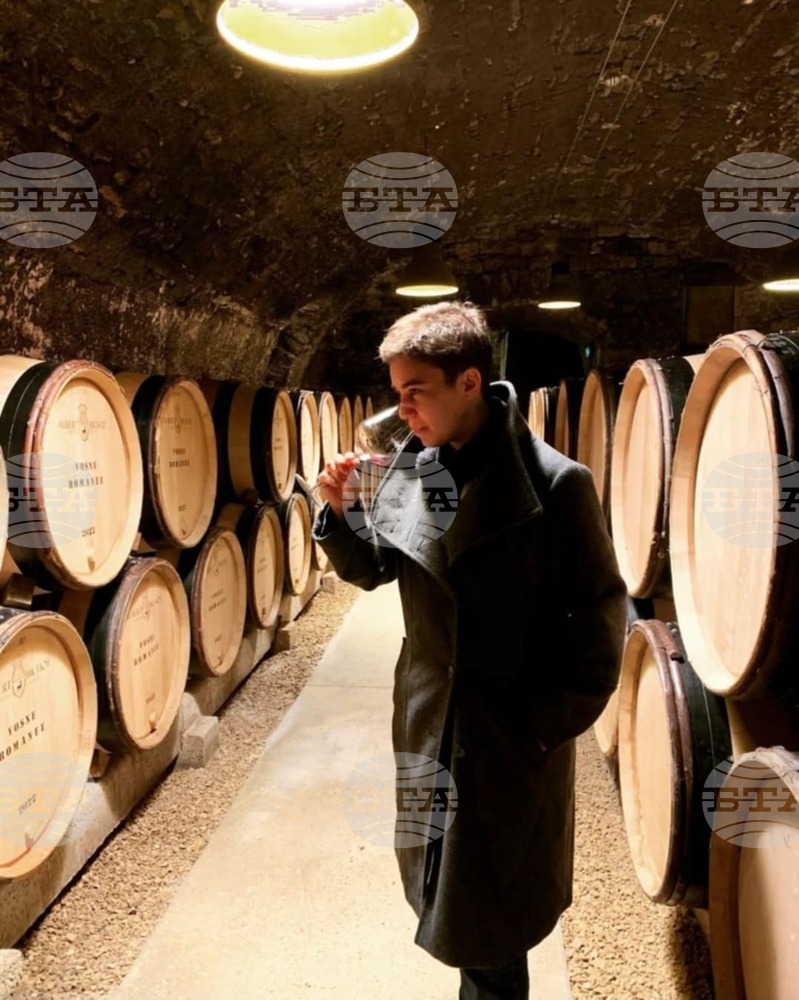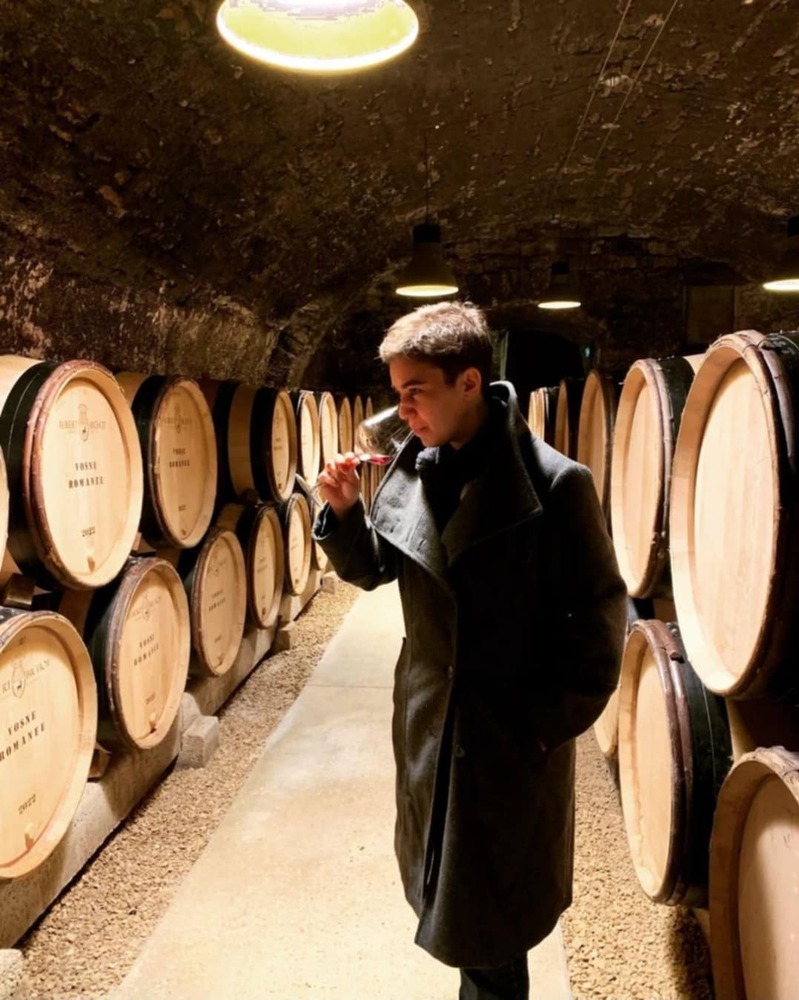site.btaBulgarian Wine in France: The Surprise Findings of a Blind Tasting


A young Bulgarian woman, recently trained as a wine trader in Dijon, found that Bulgarian wine has a more significant potential on the French market potential than expected.
Dessislava Nikolova told BTA that she reached this conclusion by blind tasting some ten boxes of four Bulgarian wines with a target group of around 100 people in Dijon, Burgundy. That was part of her work towards a master’s degree in Wine and Spirits Management from the Burgundy School of Business.
The statistics
Bulgaria’s vineyards totaled 32,178 ha in 2023, according to an annual report recently released by the Agriculture Ministry.
Of a grapes output of 147,804 tonnes, 93% were for processing and 7% for direct consumption.
Registered wine markers produced 675,740 hectolitres of wine in 2023.
The export of Bulgarian wine has declined in recent years, and this trend worsened in 2023. With imports increased, Bulgaria turned into a net wine importer in 2023, the Ministry said.
According to official statistics, 119,690 hectolitres of wine were exported last year, which was 29.1% down from 2022. In value terms, the decline was less steep, by 18.7%. Wine exports to the EU, however, dropped by 31.2%, year on year. Poland remain Bulgaria’s biggest wine market despite a decline of 45.7%.
Supplies increased to some countries: Denmark by 1.5%, Germany by 13.6%, Cyprus by 82%, Luxembourg by close to 100%, and Italy by 400%.
The export of Bulgarian wine to France contracted by a staggering 78% in 2033, year on year, to 24,538 litres.
The tasting
The four Bulgarian-made wines that Nikolova took to Dijon comprised two indigenous varieties: Tamianka and Mavrud, and two French varieties: Cabernet Sauvignon and Sauvignon Blanc.
She organized small groups of people, totalling just over 100, of whom roughly half wine experts and the rest just wine connoisseurs. She put socks on the bottles to make sure the tasters would not identify the bottles or read the labels. She did not introduce herself before the tasting and took precautions that none of the tasters knew who she was or where she came from.
Nikolova asked everyone to fill out a questionnaire to help her profile the participants and their wine-drinking habits.
As the tasting went ahead, she asked them to speak their mind straight away, analyzing the wine if they wanted or sharing any associations the wine would invoke, or anything else.
“When they were at the Cabernet Sauvignon and Sauvignon Blanc, they felt more like talking. The Mavrud and the Tamianka left them quieter, especially the wine experts,” Nikolova said.
She believes one explanation was that as they tasted the French varieties, they thought it was French wine and were certain it was made in France and felt on familiar ground.
As she was pouring the reds in the participants’ glasses, they said they hoped it was not Cabernet Sauvignon. Nikolova blames this negative attitude to local consumer preferences in France to this wine variety.
As they tasted it, they knew it was familiar, but there was something in it that made it different. And then many of the Cabernet Sauvignon haters said it was their favourite out of the four, stylistically.
At the end of tasting of each wine, she asked them where they would like to drink it and how much they would be ready to pay for it. That was her way of finding out where exactly that wine could find its buyers.
It turned out that the participants liked Tamianka for parties with friends.
Mavrud, on the other hand, was their choice as a gift for family on an important occasion, as was case with Bulgarian-made Cabernet Sauvignon and Sauvignon Blanc.
“That alone shows that we have quality wines in Bulgaria. If you are ready to buy a bottle of wine for an important family occasion, it must be quality wine, at least as the French are concerned,” Nikolova told BTA.
Then she told the participants she was Bulgarian. She would still not reveal the identity of the wines.
She asked them what they knew about Bulgaria and what was their first association with the country. After a moment of silence, the ideas poured in: Grigor Dimitrov, Hristo Stoichkov, mountains (a friend of a friend has been hiking in Bulgaria). Middle-aged participants were familiar with the Le Mystère des voix bulgares choir, Sylvie Vartan, Plovdiv and Sofia.
Then she asked them to point Bulgaria on a map and they could not.
Only then did she tell them that the wines came from Bulgaria. She removed the socks and showed them what they had drank. The biggest surprise for most was the Cabernet Sauvignon.
Nikolova attributes this to the different climate in Bulgaria and France, which results in different Cabernet Sauvignons. “Also, wineries in Bulgaria use French oak barrels, but it is not unusual for them to use barrels made of Bulgarian oak, which lends different characteristics to the wine. “Taken together, these two factors [climate and origin of barrels] give this wine a style that French consumers are not familiar with and find fascinating,” she told BTA.
The conclusions
The tasting showed that there is a demand for Bulgarian wines on the market of France.
“Bulgarian wines have quality and appealing labels, and Bulgaria as a country piques consumer interest. These elements stand out as the wine's strongest assets,” said Nikolova.
Consumers’ limited knowledge about Bulgaria appears to be the main challenge to the popularity of Bulgarian wines.
To change that, some organizational and administrative steps need to be taken, Nikolova argued. “The country's climate is ideal for vineyards, and there are recognized wine regions with their own styles and regional varieties. Consolidating these wine-growing regions administratively into more defined wine regions could enhance their collective marketing efforts, enabling them to market themselves as a cluster rather than individual producers. That would give them more leverage to introduce themselves more effectively to French consumers,” she said.
The tasting also proved that consumers show more interest in trying foreign wines if the bottle appeared premium. Yet in the case of Nikolova’s tasting, what appealed to the participants was the authenticity reflected in Bulgarian-inspired bottle designs.
“Another challenge lies in establishing genuine ambassadors for Bulgarian wines within France, who could stage cultural events featuring Bulgarian wines. Ultimately, improved communication and a more cohesive structure within Bulgaria are pivotal if Bulgarian producers want to enter the French market successfully,” Nikolova concludes.
The limitations
She admits that there are several limitations to her study. First, the number of participants was at the lower limit and the majority were under 35 year old, and she is aware that adding more participants or more age brackets would likely have produced different results. “Secondly, a significant limitation was the participants pool, as the majority came from a single region, Burgundy. Had participants from other French regions been included, the outcomes might have been different,” she told BTA.
/NF/
news.modal.header
news.modal.text